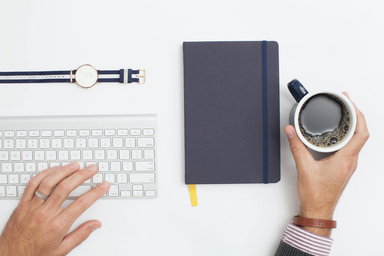After a rocky relationship with sustainability, Starbucks has announced a plan to cut the company’s carbon footprint in half by 2030. On Tuesday, Jan. 21, Starbucks’ CEO, Kevin Johnson posted a letter to the Starbucks website detailing these plans, as well as how Starbucks plans to accomplish them. Johnson admits that while these changes are worthwhile, they will not be easy. Starbucks has a very large carbon footprint, so cutting it in half is a very large goal. They plan to start by conducting research and experimenting with different solutions this year and fully rolling out a specific plan by the companies 50th anniversary next year.
In his letter, Johnson lists five main strategies that Starbucks has agreed upon after working with World Wildlife Fund (WWF) and Quantis to assess their carbon, waste, and water footprint globally. The strategies are not unlike those that have started to become more common as businesses move towards environmental sustainability and include a more environmentally friendly menu with plant-based options; reusable packaging; “innovative and regenerative agricultural practices,” including reforestation, forest conservation and water replenishment; better waste management with an emphasis on reuse and recycling, as well as less food waste, and more eco-friendly stores, operations, manufacturing, and delivery.
Apart from the strategies, Johnson’s letter also had three preliminary targets for 2030 to focus their research on. These targets were a 50 percent reduction in carbon emissions, conserving or replenishing 50 percent of their water use and reducing their landfill waste by 50 percent. To assist them on this journey and keep them accountable, they have partnered with Ellen MacArthur Foundation’s New Plastics Economy Global Commitment.
Courtesy: Ellen MacArthur Foundation
In the past Starbucks has attempted to follow through with some of these goals, mainly reusable packaging, which leaves some consumers slightly skeptical of their new goals. For example, in 2008 Starbucks said that by 2015 it would serve 25 percent of its drinks in reusable containers. By 2011 they had only reached 1.9 percent and decided that 25 percent was too big of a goal. They reduced it to 5 percent and by 2015, hadn’t reached either goal. By 2018 only 1.3 percent of drinks were being served in reusable cups—dropping 0.6 percent instead of moving towards 5 percent. In addition to this, in 2017 Starbucks promised to double the usage of reusable cups by 2022.
Courtesy: Starbucks
One of Starbucks’ biggest critics is As You Sow, a nonprofit advocacy group. Conrad MacKerron, the group vice president, has spoken out against Starbucks’ sustainable efforts over the past several years and this year was no different. In an interview with The Verge, he had a few predictions about how Starbucks could move away from single-use cups, including paying for single-use cups (a strategy they have already tried in the UK) and a program to borrow thermoses. MacKerron also applauded Starbucks’ new plan and their willingness to put themselves out there, as well as their plan to globally phase out plastic straws by the end of this year.
Want to see more HCFSU? Be sure to like us on Facebook and follow us on Instagram, Twitter and Pinterest!



